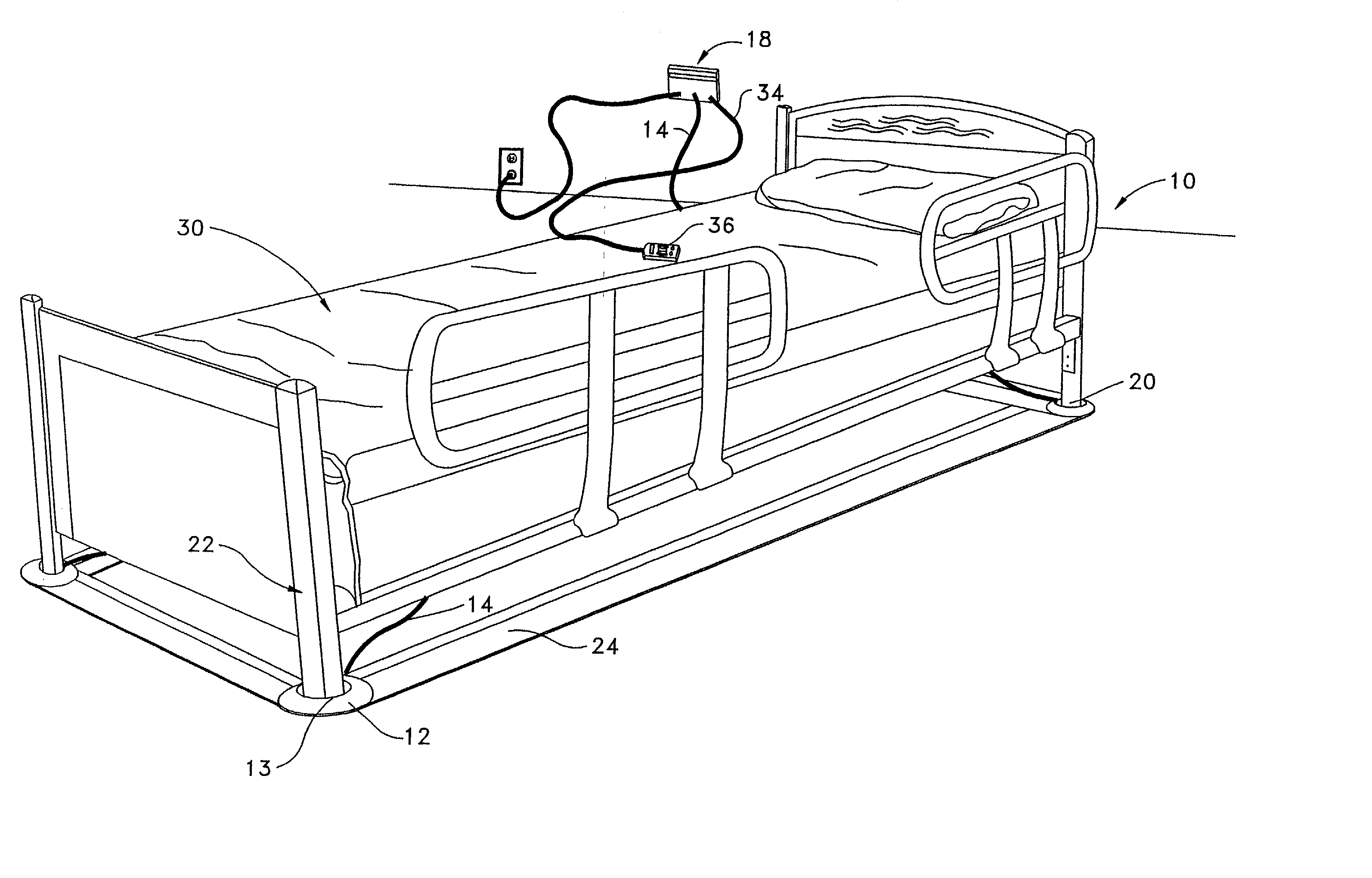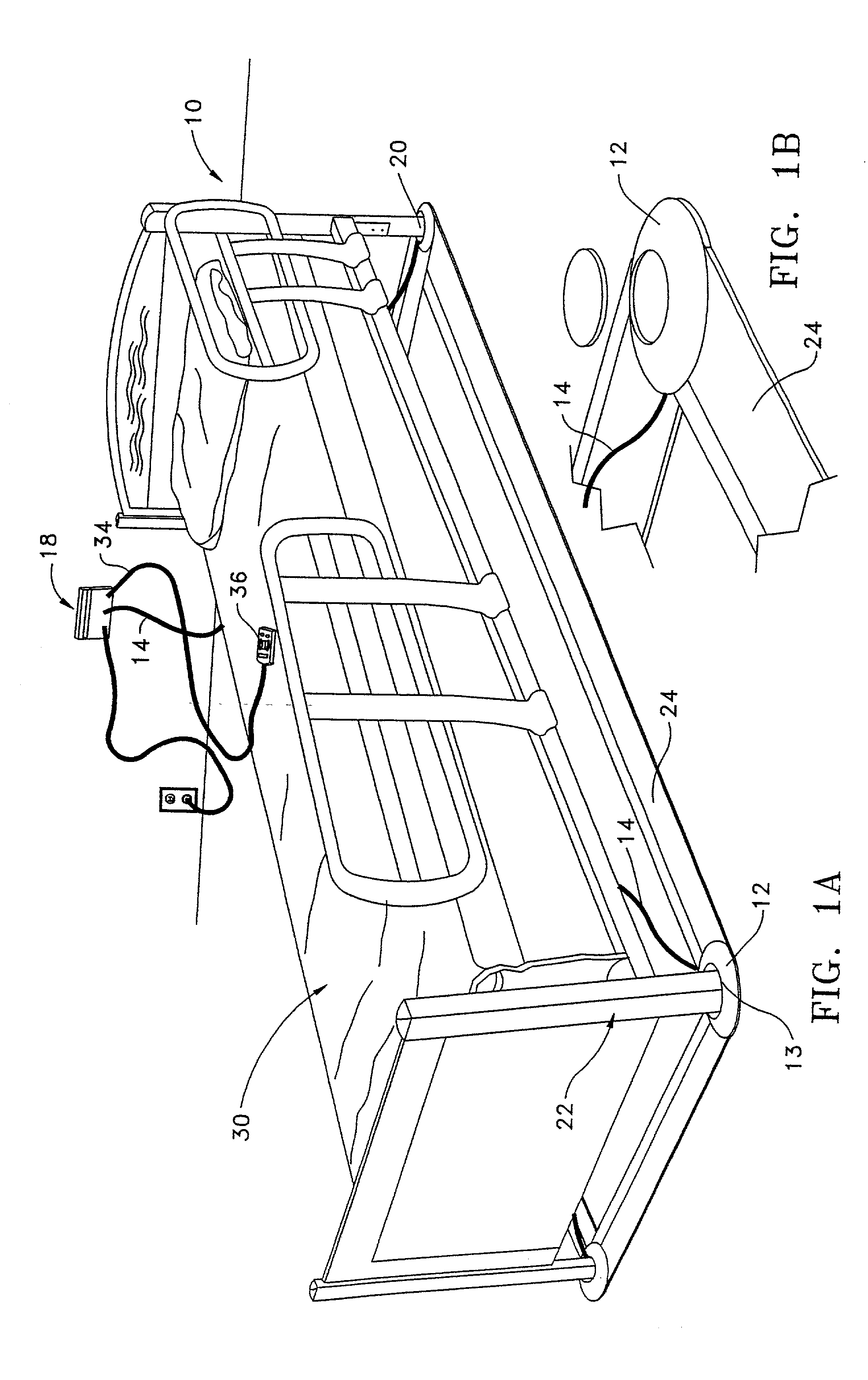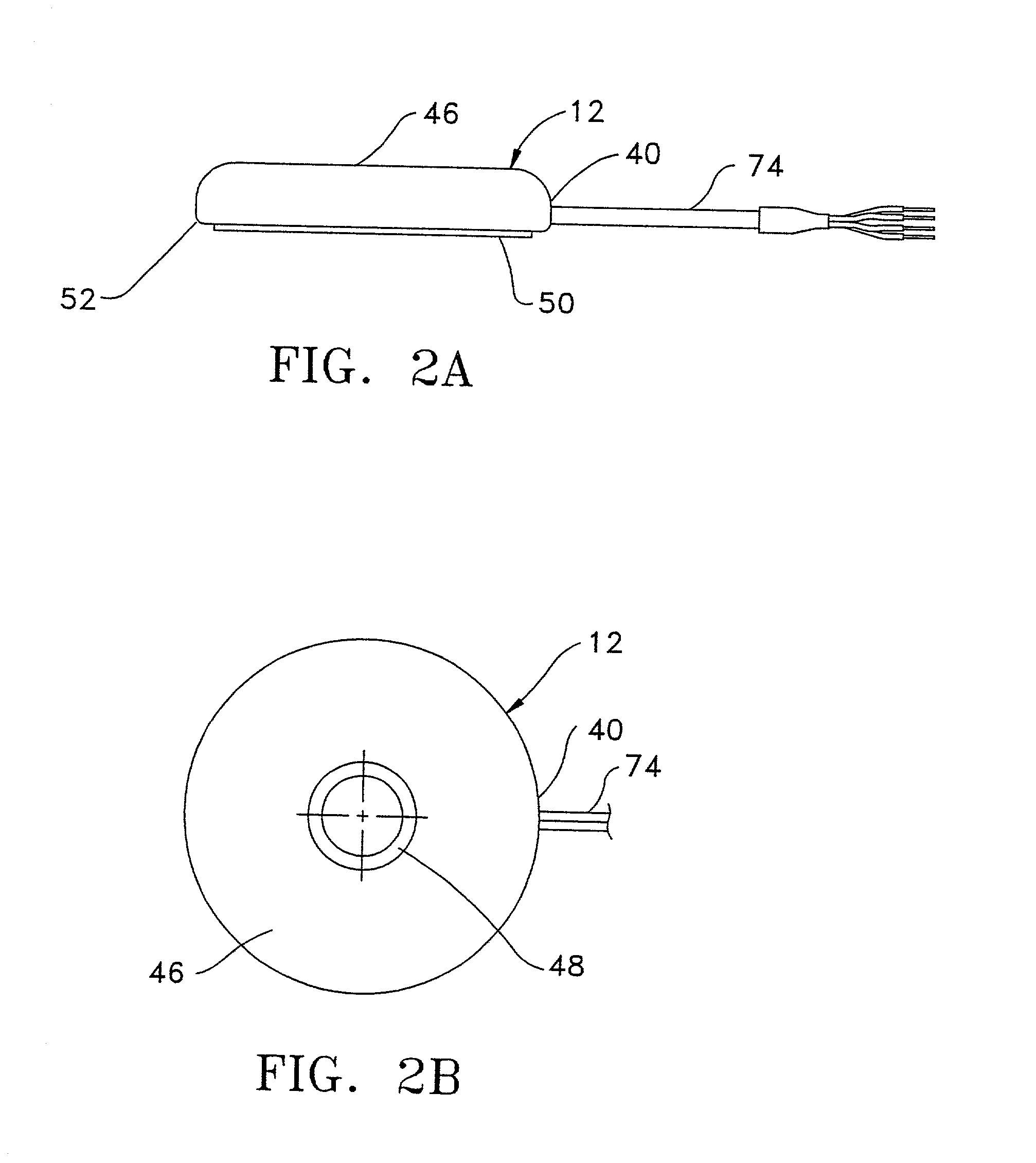Patient movement detection apparatus
a technology for movement detection and patient, applied in the field of patient movement detection apparatus, can solve the problems of reducing the efficiency of patient movement detection, and reducing the accuracy of switch based systems, so as to optimize the performance of hysteresis, the effect of minimizing the effect of potential
- Summary
- Abstract
- Description
- Claims
- Application Information
AI Technical Summary
Benefits of technology
Problems solved by technology
Method used
Image
Examples
first embodiment
[0023] Referring to the Figures wherein like numerals indicate like or corresponding parts throughout the several views, in FIG. 1A a load cell disk patient movement detection apparatus of a first embodiment is shown generally at 10. The apparatus 10 is shown attached to a patient support device 30 comprised of a plurality of support members 20 and a plurality of structural members 22. The patient support device 30 shown in FIG. 1A is a bed. Alternatively, the patient support device 30 could be a chair or a wheel chair or any patient support device that supports a body of a patient in a health care setting. The apparatus 10 comprises a plurality of load cell disks 12 placed under the support members 20 of the patient support device 30. The patient support members 20 apply a compressive load to a top portion 13 of the load cell disks 12. A plurality of transmission cables 14 are attached to the load cell disks 12 for transmitting a signal generated by the load cell disks 12 to a comb...
second embodiment
[0027] In FIG. 3A a load cell beam patient movement detection apparatus of a second embodiment is shown generally at 100. The apparatus 100 is shown attached to a patient support device 150 comprised of a plurality of support members 120 and a plurality of structural members 122. The patient support device 150 shown in FIG. 3A is a bed. Alternatively, the patient support device 150 could be a chair or a wheel chair or any patient support device that supports a body of a patient in a health care setting. The apparatus 100 comprises a plurality of load cell beams 112 placed partially under an end 140 of the support members 120 of the patient support device 150. The patient support members 120 apply a shear load to the load cell beams 112. A plurality of transmission cables 114 are attached to the load cell beams 112 for transmitting a signal generated by the load cell beams 112 to a combination processing unit / peripheral communication device 118. Alternatively, (not shown) the combina...
third embodiment
[0034] In FIG. 6A a load cell column patient movement detection apparatus of a third embodiment is shown generally at 400. The load cell column patient movement detection apparatus 400 comprises a plurality of load cell columns 410 mounted to a patient support device (not shown) by a mounting bracket 420. The load cell columns 410 are attached to the mounting bracket 420 by a fastener 440. When in place, the load cell columns 410 serve as a leg of a patient support device providing partial support of the patient support device. The load cell columns 410 comprise a plurality of strain gages (not shown) for reacting to the compression and tension forces applied to the load cell columns 410 by the patient support device. Attached to a bottom 450 of the load cell columns 410 is a rubber or synthetic cap providing a soft base for the load cell columns 410.
[0035] In FIG. 6B a load cell column 410 is shown with a transmission cable 460 attached for transmitting a signal generated by the lo...
PUM
 Login to View More
Login to View More Abstract
Description
Claims
Application Information
 Login to View More
Login to View More - R&D
- Intellectual Property
- Life Sciences
- Materials
- Tech Scout
- Unparalleled Data Quality
- Higher Quality Content
- 60% Fewer Hallucinations
Browse by: Latest US Patents, China's latest patents, Technical Efficacy Thesaurus, Application Domain, Technology Topic, Popular Technical Reports.
© 2025 PatSnap. All rights reserved.Legal|Privacy policy|Modern Slavery Act Transparency Statement|Sitemap|About US| Contact US: help@patsnap.com



